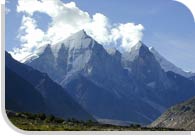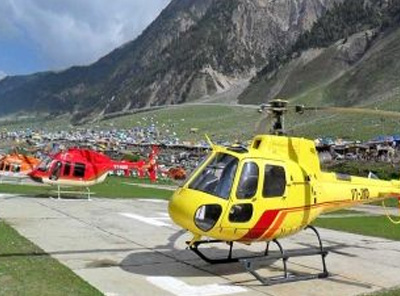Char Dham Yatra

Wildlife Tours

Mussoorie Tour Packages

Kailash Mansarovar Yatra

Adventure & Sports



The Enlightening Journey.
Attracting millions of devotees from across the globe, Char Dham Yatra occupies great importance in the Hindu religion. It is believed that whoever takes this pilgrimage gets rid of all his negative karma and accumulate boundless good fortune. Located in the great Himalayas in the state of Uttaranchal, Char Dham consists of four most sacred pilgrimages of India- Gangotri, Yamunotri, Kedarnath and Badrinath. Not only Hindus but also foreigners are very keen on taking this Char Dham Yatra. These pilgrimages are open to visitors only between May to October as during rest of the months they remain covered with ice and are not accessible.
The Char Dhams (the four abodes)
The word Gangotri literally means descending from river Ganga, considered the most sacred river in India. Gangotri is the place where goddess Ganga descended to earth from heaven. Gangotri is the source of river Ganga whose water is considered highly holy in India. Located at an elevation of 3140, Gangotri, the river is called Bhagirathi at the source, and acquires the name Ganga from Devprayaga onwards where it meets the Alaknanda. The origin of the pious river is at Gaumukh which is located in the Gangotri Glacier, near Gangotri. There is a shrine at Gangotri which is dedicated to Goddess Ganga, the daughter of heaven.
Yamunotri is the source of the Yamuna river and the abode of the goddess Yamuna.
Yamunotri is considered a sacred town as it was once the abode of the ancient sage Asit Muni. There is a temple here where goddess Yamuna is worshiped. The shrine houses a beautiful silver idol of the goddess. Yamunotri is also famous for its hot water spring where rice is cooked and then prepared into the prasad.
Kedarnath is one of the important pilgrimages of the Hindus, and particularly so because of the beautiful Kedarnath Temple. Located near the river Mandakani, the temple is dedicated to Lord Shiva. The temple is one of the twelve Jyothirlingas in India. One has to take a 14 km trek to come face to face with this temple. One of the striking features of the temple is the head of a man carved in the triangular stone fascia of the temple. Located behind the temple is the samadhi mandir of the sage.
 Valley of Flowers
Valley of Flowers  Kauri Pass Trek
Kauri Pass Trek Source of the Ganges & beyond
Source of the Ganges & beyond Kailash Mansarovar Yatra
Kailash Mansarovar Yatra Chardham Yatra by Helicopter
Chardham Yatra by Helicopter Char-Dham Yatra
Char-Dham Yatra